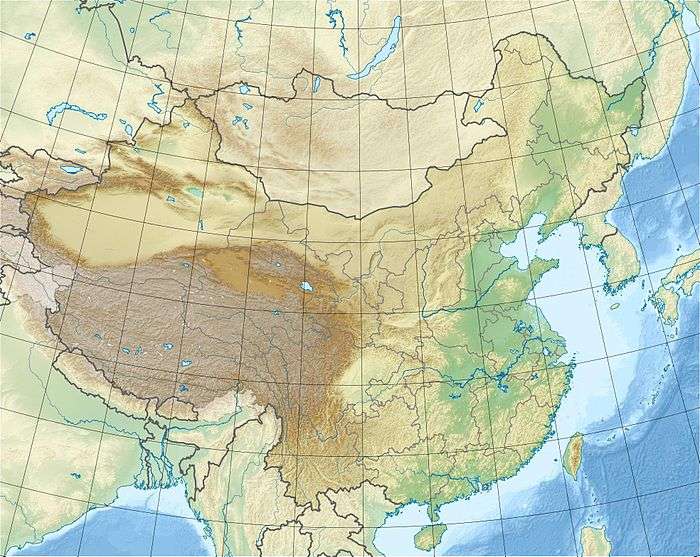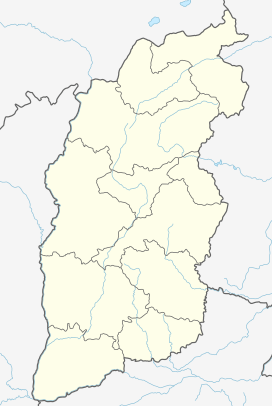Ermaying Formation
The Ermaying Formation is a sedimentary succession of Anisian (Middle Triassic) age. It is found in the Shaanxi Province of China.[1] It is composed of an up to 600 m thick sequence of mudstone and sandstone.[2] It is famous for its fossils of tetrapods.[2]
| Ermaying Formation Stratigraphic range: Anisian ~247–242 Ma | |
|---|---|
| Type | Geological formation |
| Sub-units | Two Members |
| Underlies | Tongchuan & Xingshikou Formations |
| Overlies | Liujiagou Formation |
| Thickness | Up to 600 metres (2,000 ft) |
| Lithology | |
| Primary | Mudstone, sandstone |
| Other | Tuff |
| Location | |
| Coordinates | 37°26′15″N 110°39′06″E |
| Approximate paleocoordinates | 38.2°N 90.5°E |
| Region | Shaanxi, Shanxi, Inner Mongolia |
| Country | |
 Ermaying Formation (China)  Ermaying Formation (Shanxi) | |
Fossil content
Notable fossils include the genera Fenhosuchus, Eumetabolodon, Halazhaisuchus, Guchengosuchus, Neoprocolophon, Ordosiodon, Wangisuchus and Shansisuchus.
gollark: Intel charges a large premium for them, so I think you would generally use more servers with fewer cores per socket.
gollark: They're mostly useful for per-socket licensing IIRC.
gollark: Probably.
gollark: HPC wouldn't use these overly high core count Xeons.
gollark: It's blazingly fast, although probably not very blazingly concurrent since I forgot to use atomics.
References
- Desojo, J. B. (2013). Anatomy, Phylogeny and Palaeobiology of Early Archosaurs and their Kin. ISBN 978-1862393615.
- Sues, Hans-Dieter; Fraser, Nicholas C. (2010). Triassic life on land : the great transition. New York: Columbia University Press. ISBN 978-0231135221.
This article is issued from Wikipedia. The text is licensed under Creative Commons - Attribution - Sharealike. Additional terms may apply for the media files.